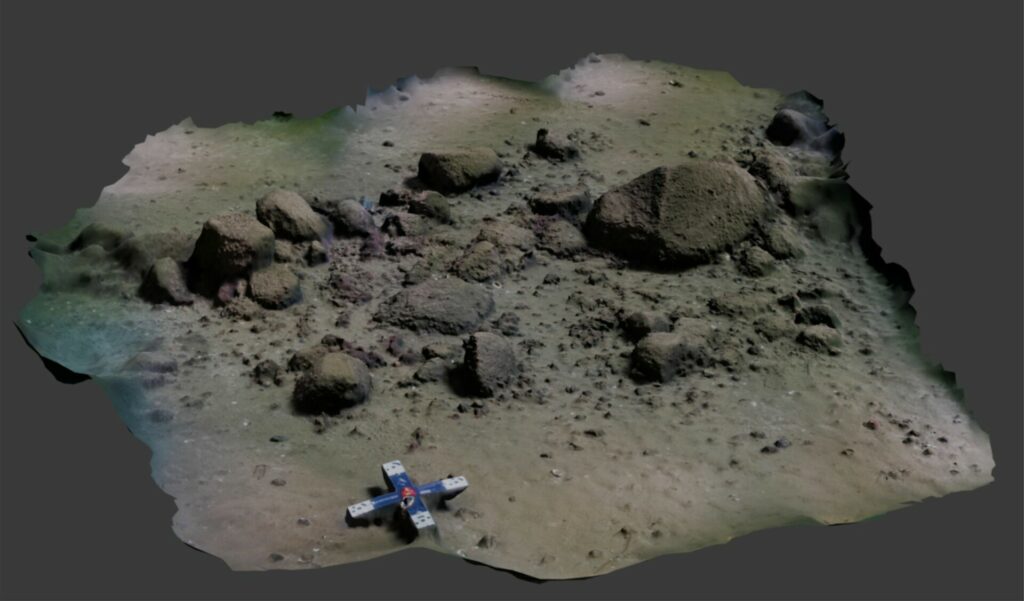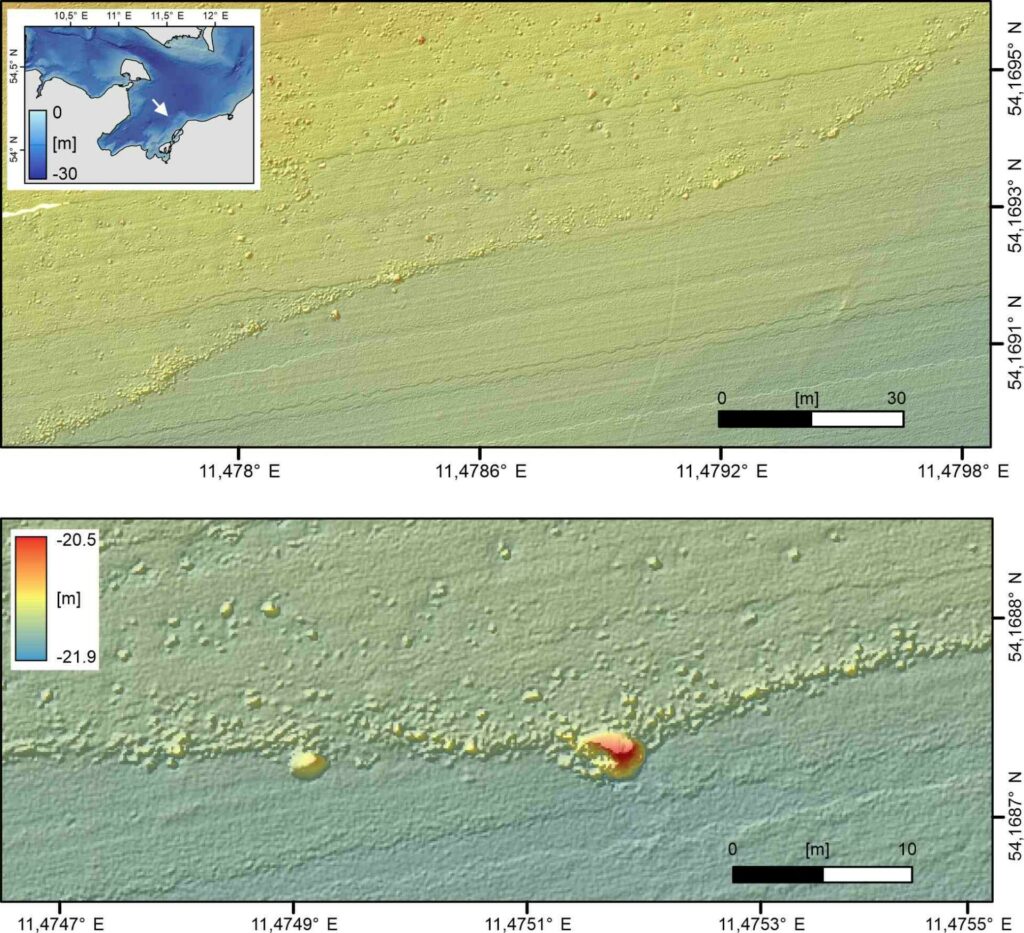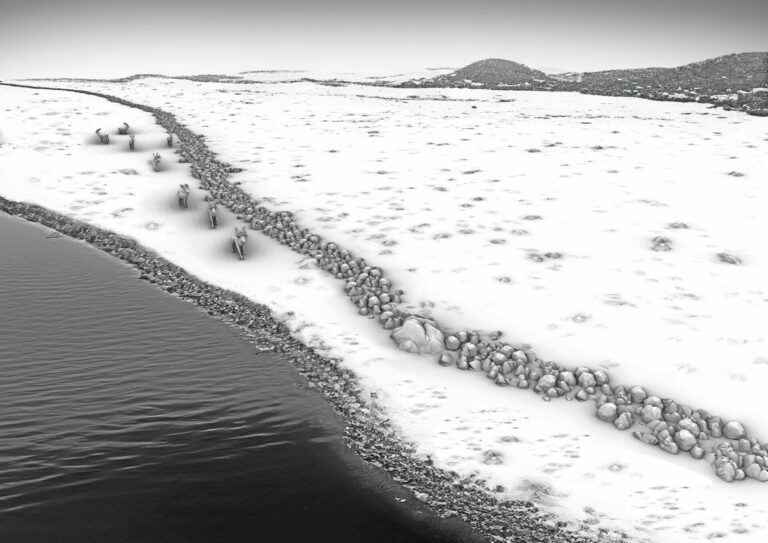An 11,000-year-old stone wall stretching for almost 1km has been discovered beneath the Baltic Sea, the oldest-known human-built mega-structure ever discovered there – and scientists say they now understand its intended purpose.
The site was found at a depth of 21m in Mecklenburg Bight, some 10km off the north German town of Rerik, by Kiel University geologists who had gone to investigate manganese crusting on the seabed in the autumn of 2021.
What they found on a ridge was an unusually regular row of some 1,500 stones stretching over 970m and aligned too regularly for any natural origin to be possible. About three-quarters of the stones were roughly tennis-ball-sized, interspersed by football-sized boulders to form a low wall.
An interdisciplinary research team has now concluded that Stone Age hunter-gatherers likely built what has been dubbed the “Blinkerwall” as a means of guiding herds of reindeer into a deadly trap.

The Leibniz Institute for Baltic Sea Research Warnemünde and the University of Rostock joined Kiel University and other bodies to carry out the research, which was co-ordinated by the Mecklenburg-Vorpommern state agency for culture & monument preservation (LAKD M-V).
Sea-level rise
The Blinkerwall lies close to what is identifiable as the previous site of a lake or bog, and would have been built long before the significant sea-level rise that occurred as the last Ice Age ended, some 8,500 years ago.
Research divers from Rostock and Kiel explored the Blinkerwall, and a detailed 3D model was produced from images of it, while the time-frame in which it could have been built was narrowed down through analysis of sediment samples.
“At this time, the entire population across northern Europe was likely below 5,000 people,” said Marcel Bradtmöller from the University of Rostock. “One of their main food sources were herds of reindeer, which migrated seasonally through the sparsely vegetated post-glacial landscape.
“The wall was probably used to guide the reindeer into a bottleneck between the adjacent lakeshore and the wall, or even into the lake, where the Stone Age hunters could kill them more easily with their weapons.” The last reindeer herds disappeared from northern latitudes around 11,000 years ago, as the climate warmed and forests spread.

Further investigation
Comparable prehistoric hunting structures have been found elsewhere in the world, including 30m deep in Lake Huron, where archaeologists found a stone wall as well as hunting blinds built for hunting caribou, the North American equivalent of reindeer. As in Mecklenburg Bight, this wall was located on the flank of a ridge with a lakeshore on one side.
Other well-preserved Stone Age sites in the Baltic area are located at much shallower depths and mostly date to the Mesolithic and Neolithic periods (7,000 – 2,500 BC). The Blinkerwall dates from the late glacial / early Holocene period.
Now it is suspected that there might be other similar hunting walls in Mecklenburg Bight, and they will be sought using side-scan sonar, sediment echo-sounding and multibeam echo-sounder devices.
Meanwhile, University of Rostock research divers and LAKD M-V archaeologists plan to dig deeper into the Blinkerwall in the hope of making further archaeological finds, as well as reconstructing the ancient surrounding landscape in more detail.
Luminescence dating will be employed to determine when the stones’ surfaces were last exposed to sunlight, which should help provide a more precise construction date.
The findings are presented in a new study, with Jacob Geersen of the Leibniz Institute for Baltic Sea Research Warnemünde as lead author, in the Proceedings of the National Academy of Sciences.
Also on Divernet: Diving 1400s Baltic wreck yields surprises, Iron balls draw divers to rare 1500s shipwreck, Rare Baltic shipwreck yields new secrets, Divers reveal 1495 shipwreck’s spicy secrets

